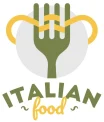Exploring Regional Italian Cuisine
Italy is a country of diverse landscapes, cultures, and traditions, and its cuisine reflects this rich variety. Each region offers distinct flavors, ingredients, and cooking techniques shaped by history, climate, and geography. Exploring regional Italian cuisine provides a deeper understanding of Italy’s culinary heritage and the stories behind its most beloved dishes.
1. Northern Italy: Rich and Creamy Flavors
Northern Italian cuisine emphasizes butter, cream, and cheeses rather than olive oil. Risotto, polenta, and stuffed pastas like tortellini and ravioli are staples. In Lombardy, saffron-infused risotto alla Milanese is famous, while Emilia-Romagna boasts the iconic lasagna and tagliatelle al ragù (Bolognese). The region’s cooler climate favors hearty dishes and dairy-based sauces.
2. Central Italy: Rustic and Flavorful
Central Italy, including Tuscany, Umbria, and Lazio, is known for rustic, simple, and flavorful dishes. Tuscan cuisine highlights fresh bread, beans, and grilled meats, such as the famous bistecca alla Fiorentina. Rome is renowned for its pasta dishes like carbonara, cacio e pepe, and amatriciana. Olive oil, fresh herbs, and seasonal vegetables play a central role in cooking.
3. Southern Italy: Bold and Vibrant
Southern Italian cuisine is vibrant, fresh, and often spicier than the north. Tomatoes, olive oil, garlic, and fresh seafood dominate the region’s dishes. Naples is the birthplace of pizza, while Sicily offers unique flavors with ingredients like pistachios, citrus, and ricotta. Pasta with rich tomato-based sauces, caponata, and fresh seafood stews showcase the region’s bold, sun-kissed flavors.
4. Italian Islands: Unique Flavors
Sardinia and Sicily have culinary traditions shaped by their island geography and historical influences. Sardinia is known for hearty breads, pecorino cheese, and roasted meats, while Sicilian cuisine combines Arab, Norman, and Mediterranean influences, evident in dishes like arancini, cannoli, and pasta con le sarde (pasta with sardines). Local ingredients and coastal flavors define these island specialties.
5. Regional Specialties and Local Pride
In Italy, food is deeply connected to local identity. Each town or village often has its own specialty, reflecting available ingredients and centuries-old traditions. From Liguria’s fresh pesto to Veneto’s seafood risotto, these local dishes are celebrated with festivals, markets, and family recipes passed through generations.
Conclusion
Regional Italian cuisine is a journey through Italy’s history, geography, and culture. Each area offers unique flavors, techniques, and ingredients that contribute to the country’s culinary diversity. Exploring these dishes allows food lovers to appreciate the richness and complexity of Italian cuisine, from the creamy risottos of the north to the vibrant seafood dishes of the south. By experiencing regional specialties, you gain a deeper understanding of Italy and the passion Italians put into every meal.


